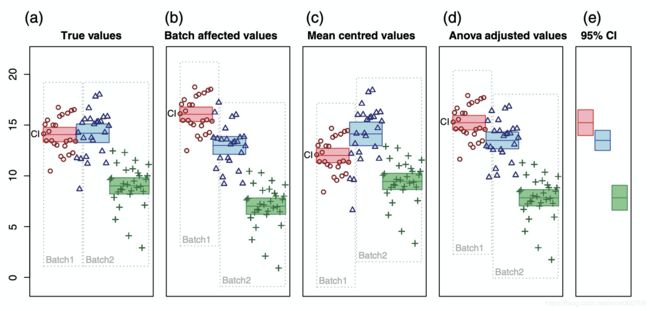- FB-OCC: 3D Occupancy Prediction based on Forward-BackwardView Transformation
justtoomuchforyou
智驾
NVidia,CVPR20233DOccupancyPredictionChallengeworkshoppaper:https://arxiv.org/pdf/2307.1492code:https://github.com/NVlabs/FB-BEV大参数量imagebackboneInternImage-H,1B外部数据集预训练:object365nuscenes:有点云label,强化网络
- PillarNet: Real-Time and High-PerformancePillar-based 3D Object Detection
justtoomuchforyou
目标检测人工智能计算机视觉智驾
ECCV2022paper:[2205.07403]PillarNet:Real-TimeandHigh-PerformancePillar-based3DObjectDetectioncode:https://github.com/VISION-SJTU/PillarNet-LTS纯点云基于pillar3D检测模型网络比较SECOND基于voxel,one-stage,基于sparse3Dc
- .NET C# async/定时任务的异步线程池调度方案最大线程数 = 处理器核心数 × 250
专注VB编程开发20年
.netc#开发语言
关于.NET中Threading.Timer的线程机制,结合线程池特性和异步协作原理分析如下:一、线程复用机制共享进程级线程池Threading.Timer的回调任务不会每次新建线程,而是提交到.NET进程全局线程池统一调度,该线程池与async/await任务共享同一资源池。线程池维护可复用工作线程队列,避免频繁创建/销毁开销任务优先由空闲线程执行,无空闲线程则进入全局队列等待线程池扩
- CCF推荐会议 计算机体系结构/并行与分布计算/存储系统领域3月份截稿资讯 汇总!
会议之眼
人工智能深度学习阿里云云计算计算机网络
会议之眼快讯会议之眼精心汇总了以下CCF推荐会议之计算机十大领域之一:计算机体系结构/并行与分布计算/存储系统领域,2024年度3月份会议截稿资讯!为你第一时间进行播报!让广大科研学者及时了解最新的学术进展,助力学者们在专业领域保持竞争优势!会议简称:ISLPED会议全称:InternationalSymposiumonLowPowerElectronicsandDesignFullPaperDe
- python做生物信息学分析_Python从零开始第五章生物信息学①提取差异基因
吴敬欣
python做生物信息学分析
目前来说,做生物信息学的人越来越多,但是我觉得目前而言做生信的主要有三类人:老本行是做实验的,做生信可能是为了辅助研究或者是为了发paper(有非常多的临床生选择趟生信这波水)主要是做生信的,主要涵盖高通量测序数据分析,组学数据分析等等,专门从事生物学数据分析的这群人,其大部分也是本科生物狗作为强大的生力军,以调包写R,python为主。那么这群人就要熟悉看各种包的tutorial以及如何进行常规
- Python多线程实现FTP密码破解技术指南
不胖的羊
本文还有配套的精品资源,点击获取简介:本文主要介绍在Python环境下,使用多线程技术提升FTP密码安全性测试的效率。通过threading模块实现多线程,每个线程尝试一个密码,大幅加快破解过程。详细阐述了ftpbrute.py脚本的关键实现部分,包括导入库、定义密码字典、创建线程类、启动线程、等待线程完成以及添加错误处理和安全措施。需要注意的是,未经授权的密码破解活动是非法的,必须在合法授权的情
- Python的多线程
Simple十年一剑
Pythonpython多线程
#coding=utf-8#包含threading模块importthreadingfromtimeimportctime,sleepdefmusic(func):foriinrange(2):print"Iwaslisteningto%s.%s"%(func,ctime())sleep(1)defmove(func):foriinrange(2):print"Iwasatthe%s!%s"%(f
- 进阶版爬虫
启明源码
爬虫
要掌握进阶版爬虫,你需要从基础爬虫技能过渡到更复杂的内容采集与反爬机制绕过技术。以下是一个系统性的进阶学习路线及关键技术点:进阶爬虫学习路线图一、基础回顾(必须扎实)熟练使用:requests/httpx网页解析:BeautifulSoup/lxml/xpath多线程/多进程:threading/multiprocessing/concurrent.futures简单爬虫项目:新闻/电商类页面爬取
- c# groupbox大小_C# Winform窗体和控件自适应大小
weixin_39998541
c#groupbox大小
usingSystem;usingSystem.Collections.Generic;usingSystem.Linq;usingSystem.Text;usingSystem.Threading.Tasks;usingSystem.Windows.Forms;namespaceCSharpFormApplication{classAutoResizeForm{//(1).声明结构,只记录窗体和
- python 在线预览文件_OFFICE 文档转换为html在线预览
苏橙橙
python在线预览文件
OFFICE文档转换为html在线预览OFFICE文档在线预览方案很多:服务器先转换为PDF,再转换为SWF,最后通过网页加载Flash预览,比如flexpaperOffice文档直接转换为SWF,通过网页加载Flash预览微软的Office365在浏览器中直接打开转换为html今天,我们要用的方案是转换为html来预览。技术方案:office文档转换为pdf:使用libreofficepdf转h
- lost connection to mysql server at ‘reading initial communication packet‘, system error: 0
丿失刀丨
mysql
我遇到的问题就是连接的线程太多,没有关闭造成的,具体操作如下:showprocesslist;看Time长的直接杀掉就行了。杀掉的方式是kill+id;如下:kill533;
- lost connection to mysql server at ‘reading initial communication packet‘
%d%d2
bug
参考:dockerrun--namemysql\-p3307:3306\-eMYSQL_ROOT_PASSWORD=root\-dmysql:5.7.36#宿主机3307映射容器3306(没有修改mysql配置,默认3306)使用WSL访问网络应用程序|MicrosoftLearn->windows访问WSL直接使用localhostDockerDesktop(WSL)部署MySQL使用Navic
- Python多线程与多进程
文章目录1、PythonGIL(全局解释器锁)一、GIL导致伪并发的核心机制二、伪并发的表现与影响1.CPU密集型任务:多线程无效甚至负优化2.I/O密集型任务:多线程有效3.伪并发本质三、为什么需要GIL?设计初衷四、解决GIL限制的方案2、多线程和多进程核心区别实现方式与代码示例1.多线程实现(`threading`模块)2.多进程实现(`multiprocessing`模块)高级用法线程池/
- Android 14.0 默认壁纸不好看,客户要换成他们喜欢的壁纸,Android 14.0 更换默认壁纸的方法
zzq1996
android
Android14.0默认壁纸不好看,客户要换成他们喜欢的壁纸,Android14.0更换默认壁纸的方法替换如下framework路径的壁纸图片。diff--gita/frameworks/base/core/res/res/drawable-nodpi/default_wallpaper.pngb//frameworks/base/core/res/res/drawable-nodpi/defa
- 转 Totally Data-Driven Automated Testing
black_sam
QTP测试框架testingpaymentapplicationsubroutinespreadsheetfunction
TotallyData-DrivenAutomatedTestingAWhitePaperByKeithZambelichSr.SoftwareQualityAssuranceAnalystAutomatedTestingEvangelistProfessionalHistoryandCredentials:IhavebeeninvolvedinSoftwareTestingandSoftware
- ubuntu执行sudo apt update 出现问题
问题描述:Readingpackagelists...DoneE:Failedtofetchhttps://mirrors.ustc.edu.cn/ubuntu-ports/dists/focal/main/binary-amd64/Packages404NotFound[IP:202.38.95.110443]E:Failedtofetchhttps://mirrors.ustc.edu.cn/
- C#中实现排序的方法并绑定到datagridview控件中
唐令
c#开发语言
usingSystem;usingSystem.Collections.Generic;usingSystem.ComponentModel;usingSystem.Data;usingSystem.Drawing;usingSystem.Linq;usingSystem.Text;usingSystem.Threading.Tasks;usingSystem.Windows.Forms;usin
- python io模块怎么导入_Python的StringIO模块和cStringIO模块
weixin_39518840
pythonio模块怎么导入
1.StringIO模块StringIO用于像文件一样对字符串缓冲区或者叫做内存文件进行读写。f=StringIO()#readyforwritingf=StringIO(buf)#readyforreadingf.close()#explicitlyreleaseresourcesheldflag=f.isatty()#alwaysfalsepos=f.tell()#getcurrentposi
- ubuntu 20.04安装配置ssh远程服务中出现的一些问题及总结
ava不要秃头
ubuntu服务器linux
0.安装配置过程参考(56条消息)ubuntu20.04开启SSH远程登录_从此开始低调范✌️的博客-CSDN博客_ubuntu开启ssh远程登录1.输入sudoapt-getinstallopenssh-server提示Readingstateinformation...Error!E:Unabletoparsepackagefile/var/lib/apt/extended_states(1)
- Cross-stitch Networks for Multi-task Learning 项目教程
童香莺Wyman
Cross-stitchNetworksforMulti-taskLearning项目教程Cross-stitch-Networks-for-Multi-task-LearningATensorflowimplementationofthepaperarXiv:1604.03539项目地址:https://gitcode.com/gh_mirrors/cr/Cross-stitch-Network
- 探索多任务学习的新维度:Cross-stitch Networks
计蕴斯Lowell
探索多任务学习的新维度:Cross-stitchNetworksCross-stitch-Networks-for-Multi-task-LearningATensorflowimplementationofthepaperarXiv:1604.03539项目地址:https://gitcode.com/gh_mirrors/cr/Cross-stitch-Networks-for-Multi-t
- 7种方法提高源码阅读技巧
学会了没
源码阅读编程技巧
Readingsourcecodeisinthejobdescriptionofasoftwaredeveloper.However,thisexperienceisnotalwayspleasant.Noteveryonewouldliketoreadsomeoneelse’scodebecausetheyfinditboring,sometimesfrustrating.Therearecas
- 资源分享 | 一、盘点高清壁纸网站
雨中散步撒哈拉
资源壁纸高清
资源分享|一、盘点高清壁纸网站1.wallroom2.极简壁纸3.高清壁纸库4.动漫图片和壁纸5.WallpaperAbyss资源分享|一、盘点无版权图片网站作者:1024导航网址:https://shanhaigo.cn备注:1024导航致力于收集高质量网站,内容持续更新中....本文内容,已收录至1024导航:https://shanhaigo.cn1.wallroom高分辨率高质量壁纸2.极
- SAM2论文解读-既实现了视频的分割一切,又比图像的分割一切SAM更快更好
↣life♚
计算机视觉大模型通用模型人工智能计算机视觉深度学习通用分割视频分割算法
code:https://github.com/facebookresearch/sam2/tree/maindemo:https://sam2.metademolab.com/paper:https://ai.meta.com/research/publications/sam-2-segment-anything-in-images-and-videos/这是SAM这是SAM2Facebook
- 字节Bagel多模态大模型解读
小李飞刀李寻欢
OpenSource大模型papergithub代码解读
github:https://github.com/bytedance-seed/BAGELpaper:https://arxiv.org/pdf/2505.14683本文是一篇关于多模态预训练模型BAGEL的论文,由来自字节跳动、深圳先进技术研究院、莫纳什大学、香港科技大学和加州大学圣克鲁兹分校的研究人员共同撰写。BAGEL是一个开源的基础模型,支持多种模态的理解和生成,包括文本、图像和视频。该
- Python爬虫实战:研究threading相关技术
ylfhpy
爬虫项目实战python爬虫开发语言htmlscrapy
1.引言1.1研究背景与意义随着互联网的快速发展,网页数据量呈爆炸式增长。网络爬虫作为一种自动获取网页内容的工具,在搜索引擎优化、数据挖掘、舆情分析等领域具有广泛应用。传统的单线程爬虫在面对大规模数据采集任务时效率低下,无法充分利用多核CPU资源。多线程技术可以显著提高爬虫的并发处理能力,加快数据采集速度。1.2国内外研究现状国外在网络爬虫领域起步较早,Google、Bing等搜索引擎公司拥有大规
- python两个客户端互发信息
hashiqimiya
python网络服务器
一、#在一台电脑上即可完成聊天#这里是服务器importsocketimportthreading#用于转发消息的函数defhandle_client(client_socket,client_address,clients):print(f"客户端{client_address}已连接")whileTrue:try:#接收客户端消息message=client_socket.recv(1024)
- CS_Prj01 用C#生成一个桌面指针式时钟程序
1.运行结果2.程序usingSystem;usingSystem.Collections.Generic;usingSystem.ComponentModel;usingSystem.Data;usingSystem.Drawing;usingSystem.Linq;usingSystem.Text;usingSystem.Threading.Tasks;usingSystem.Windows.
- [paper] Look Into Person
AlgoComp
paperreading计算机视觉
(CVPR2017)LookintoPerson:Self-supervisedStructure-sensitiveLearningandANewBenchmarkforHumanParsingPaper:http://www.linliang.net/files/CVPR17_LIP.pdfProject:http://hcp.sysu.edu.cn/lip/index.phpCode:htt
- CHES 2022 issue-4文章总结
打工小熊猫
密码学文献分类总结同态加密网络安全可信计算技术密码学安全威胁分析网络攻击模型
来源:https://ches.iacr.org/2022/acceptedpapers.php简要分类:分类文章编号后量子密码软硬件加速相关13,22,26侧信道攻防相关3,6,8-12,14,15,17,18,20,21,23,25,27,28,29,31,32同态相关241.WhenBadNewsBecomeGoodNews:TowardsUsableInstancesofLearningw
- ASM系列四 利用Method 组件动态注入方法逻辑
lijingyao8206
字节码技术jvmAOP动态代理ASM
这篇继续结合例子来深入了解下Method组件动态变更方法字节码的实现。通过前面一篇,知道ClassVisitor 的visitMethod()方法可以返回一个MethodVisitor的实例。那么我们也基本可以知道,同ClassVisitor改变类成员一样,MethodVIsistor如果需要改变方法成员,注入逻辑,也可以
- java编程思想 --内部类
百合不是茶
java内部类匿名内部类
内部类;了解外部类 并能与之通信 内部类写出来的代码更加整洁与优雅
1,内部类的创建 内部类是创建在类中的
package com.wj.InsideClass;
/*
* 内部类的创建
*/
public class CreateInsideClass {
public CreateInsideClass(
- web.xml报错
crabdave
web.xml
web.xml报错
The content of element type "web-app" must match "(icon?,display-
name?,description?,distributable?,context-param*,filter*,filter-mapping*,listener*,servlet*,s
- 泛型类的自定义
麦田的设计者
javaandroid泛型
为什么要定义泛型类,当类中要操作的引用数据类型不确定的时候。
采用泛型类,完成扩展。
例如有一个学生类
Student{
Student(){
System.out.println("I'm a student.....");
}
}
有一个老师类
- CSS清除浮动的4中方法
IT独行者
JavaScriptUIcss
清除浮动这个问题,做前端的应该再熟悉不过了,咱是个新人,所以还是记个笔记,做个积累,努力学习向大神靠近。CSS清除浮动的方法网上一搜,大概有N多种,用过几种,说下个人感受。
1、结尾处加空div标签 clear:both 1 2 3 4
.div
1
{
background
:
#000080
;
border
:
1px
s
- Cygwin使用windows的jdk 配置方法
_wy_
jdkwindowscygwin
1.[vim /etc/profile]
JAVA_HOME="/cgydrive/d/Java/jdk1.6.0_43" (windows下jdk路径为D:\Java\jdk1.6.0_43)
PATH="$JAVA_HOME/bin:${PATH}"
CLAS
- linux下安装maven
无量
mavenlinux安装
Linux下安装maven(转) 1.首先到Maven官网
下载安装文件,目前最新版本为3.0.3,下载文件为
apache-maven-3.0.3-bin.tar.gz,下载可以使用wget命令;
2.进入下载文件夹,找到下载的文件,运行如下命令解压
tar -xvf apache-maven-2.2.1-bin.tar.gz
解压后的文件夹
- tomcat的https 配置,syslog-ng配置
aichenglong
tomcathttp跳转到httpssyslong-ng配置syslog配置
1) tomcat配置https,以及http自动跳转到https的配置
1)TOMCAT_HOME目录下生成密钥(keytool是jdk中的命令)
keytool -genkey -alias tomcat -keyalg RSA -keypass changeit -storepass changeit
- 关于领号活动总结
alafqq
活动
关于某彩票活动的总结
具体需求,每个用户进活动页面,领取一个号码,1000中的一个;
活动要求
1,随机性,一定要有随机性;
2,最少中奖概率,如果注数为3200注,则最多中4注
3,效率问题,(不能每个人来都产生一个随机数,这样效率不高);
4,支持断电(仍然从下一个开始),重启服务;(存数据库有点大材小用,因此不能存放在数据库)
解决方案
1,事先产生随机数1000个,并打
- java数据结构 冒泡排序的遍历与排序
百合不是茶
java
java的冒泡排序是一种简单的排序规则
冒泡排序的原理:
比较两个相邻的数,首先将最大的排在第一个,第二次比较第二个 ,此后一样;
针对所有的元素重复以上的步骤,除了最后一个
例题;将int array[]
- JS检查输入框输入的是否是数字的一种校验方法
bijian1013
js
如下是JS检查输入框输入的是否是数字的一种校验方法:
<form method=post target="_blank">
数字:<input type="text" name=num onkeypress="checkNum(this.form)"><br>
</form>
- Test注解的两个属性:expected和timeout
bijian1013
javaJUnitexpectedtimeout
JUnit4:Test文档中的解释:
The Test annotation supports two optional parameters.
The first, expected, declares that a test method should throw an exception.
If it doesn't throw an exception or if it
- [Gson二]继承关系的POJO的反序列化
bit1129
POJO
父类
package inheritance.test2;
import java.util.Map;
public class Model {
private String field1;
private String field2;
private Map<String, String> infoMap
- 【Spark八十四】Spark零碎知识点记录
bit1129
spark
1. ShuffleMapTask的shuffle数据在什么地方记录到MapOutputTracker中的
ShuffleMapTask的runTask方法负责写数据到shuffle map文件中。当任务执行完成成功,DAGScheduler会收到通知,在DAGScheduler的handleTaskCompletion方法中完成记录到MapOutputTracker中
- WAS各种脚本作用大全
ronin47
WAS 脚本
http://www.ibm.com/developerworks/cn/websphere/library/samples/SampleScripts.html
无意中,在WAS官网上发现的各种脚本作用,感觉很有作用,先与各位分享一下
获取下载
这些示例 jacl 和 Jython 脚本可用于在 WebSphere Application Server 的不同版本中自
- java-12.求 1+2+3+..n不能使用乘除法、 for 、 while 、 if 、 else 、 switch 、 case 等关键字以及条件判断语句
bylijinnan
switch
借鉴网上的思路,用java实现:
public class NoIfWhile {
/**
* @param args
*
* find x=1+2+3+....n
*/
public static void main(String[] args) {
int n=10;
int re=find(n);
System.o
- Netty源码学习-ObjectEncoder和ObjectDecoder
bylijinnan
javanetty
Netty中传递对象的思路很直观:
Netty中数据的传递是基于ChannelBuffer(也就是byte[]);
那把对象序列化为字节流,就可以在Netty中传递对象了
相应的从ChannelBuffer恢复对象,就是反序列化的过程
Netty已经封装好ObjectEncoder和ObjectDecoder
先看ObjectEncoder
ObjectEncoder是往外发送
- spring 定时任务中cronExpression表达式含义
chicony
cronExpression
一个cron表达式有6个必选的元素和一个可选的元素,各个元素之间是以空格分隔的,从左至右,这些元素的含义如下表所示:
代表含义 是否必须 允许的取值范围 &nb
- Nutz配置Jndi
ctrain
JNDI
1、使用JNDI获取指定资源:
var ioc = {
dao : {
type :"org.nutz.dao.impl.NutDao",
args : [ {jndi :"jdbc/dataSource"} ]
}
}
以上方法,仅需要在容器中配置好数据源,注入到NutDao即可.
- 解决 /bin/sh^M: bad interpreter: No such file or directory
daizj
shell
在Linux中执行.sh脚本,异常/bin/sh^M: bad interpreter: No such file or directory。
分析:这是不同系统编码格式引起的:在windows系统中编辑的.sh文件可能有不可见字符,所以在Linux系统下执行会报以上异常信息。
解决:
1)在windows下转换:
利用一些编辑器如UltraEdit或EditPlus等工具
- [转]for 循环为何可恨?
dcj3sjt126com
程序员读书
Java的闭包(Closure)特征最近成为了一个热门话题。 一些精英正在起草一份议案,要在Java将来的版本中加入闭包特征。 然而,提议中的闭包语法以及语言上的这种扩充受到了众多Java程序员的猛烈抨击。
不久前,出版过数十本编程书籍的大作家Elliotte Rusty Harold发表了对Java中闭包的价值的质疑。 尤其是他问道“for 循环为何可恨?”[http://ju
- Android实用小技巧
dcj3sjt126com
android
1、去掉所有Activity界面的标题栏
修改AndroidManifest.xml 在application 标签中添加android:theme="@android:style/Theme.NoTitleBar"
2、去掉所有Activity界面的TitleBar 和StatusBar
修改AndroidManifes
- Oracle 复习笔记之序列
eksliang
Oracle 序列sequenceOracle sequence
转载请出自出处:http://eksliang.iteye.com/blog/2098859
1.序列的作用
序列是用于生成唯一、连续序号的对象
一般用序列来充当数据库表的主键值
2.创建序列语法如下:
create sequence s_emp
start with 1 --开始值
increment by 1 --増长值
maxval
- 有“品”的程序员
gongmeitao
工作
完美程序员的10种品质
完美程序员的每种品质都有一个范围,这个范围取决于具体的问题和背景。没有能解决所有问题的
完美程序员(至少在我们这个星球上),并且对于特定问题,完美程序员应该具有以下品质:
1. 才智非凡- 能够理解问题、能够用清晰可读的代码翻译并表达想法、善于分析并且逻辑思维能力强
(范围:用简单方式解决复杂问题)
- 使用KeleyiSQLHelper类进行分页查询
hvt
sql.netC#asp.nethovertree
本文适用于sql server单主键表或者视图进行分页查询,支持多字段排序。KeleyiSQLHelper类的最新代码请到http://hovertree.codeplex.com/SourceControl/latest下载整个解决方案源代码查看。或者直接在线查看类的代码:http://hovertree.codeplex.com/SourceControl/latest#HoverTree.D
- SVG 教程 (三)圆形,椭圆,直线
天梯梦
svg
SVG <circle> SVG 圆形 - <circle>
<circle> 标签可用来创建一个圆:
下面是SVG代码:
<svg xmlns="http://www.w3.org/2000/svg" version="1.1">
<circle cx="100" c
- 链表栈
luyulong
java数据结构
public class Node {
private Object object;
private Node next;
public Node() {
this.next = null;
this.object = null;
}
public Object getObject() {
return object;
}
public
- 基础数据结构和算法十:2-3 search tree
sunwinner
Algorithm2-3 search tree
Binary search tree works well for a wide variety of applications, but they have poor worst-case performance. Now we introduce a type of binary search tree where costs are guaranteed to be loga
- spring配置定时任务
stunizhengjia
springtimer
最近因工作的需要,用到了spring的定时任务的功能,觉得spring还是很智能化的,只需要配置一下配置文件就可以了,在此记录一下,以便以后用到:
//------------------------定时任务调用的方法------------------------------
/**
* 存储过程定时器
*/
publi
- ITeye 8月技术图书有奖试读获奖名单公布
ITeye管理员
活动
ITeye携手博文视点举办的8月技术图书有奖试读活动已圆满结束,非常感谢广大用户对本次活动的关注与参与。
8月试读活动回顾:
http://webmaster.iteye.com/blog/2102830
本次技术图书试读活动的优秀奖获奖名单及相应作品如下(优秀文章有很多,但名额有限,没获奖并不代表不优秀):
《跨终端Web》
gleams:http
